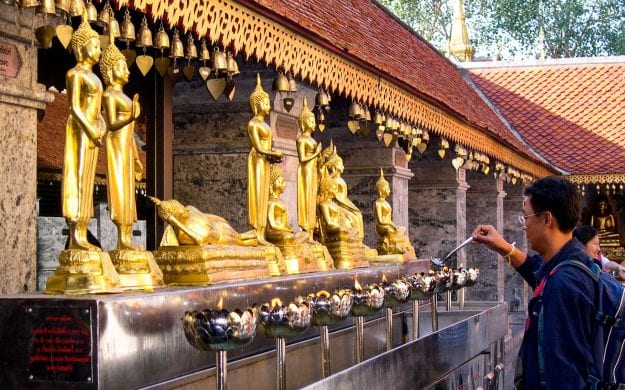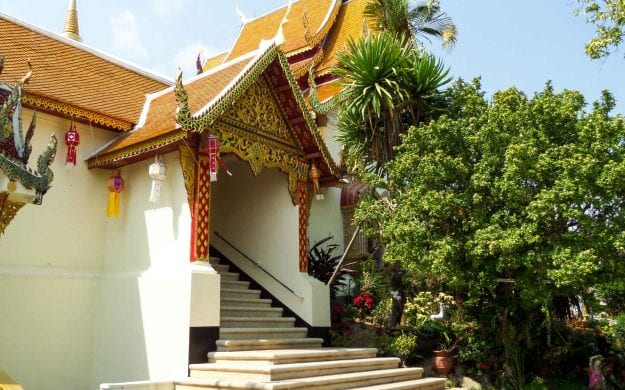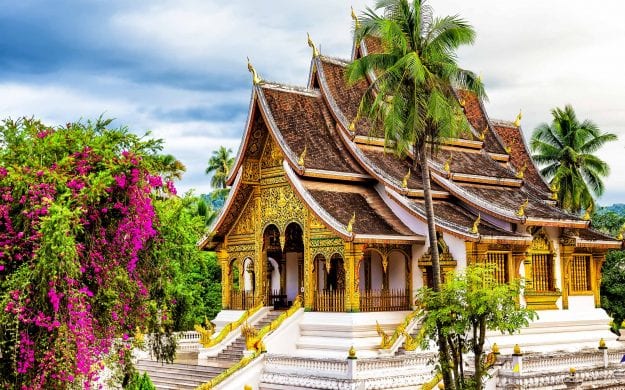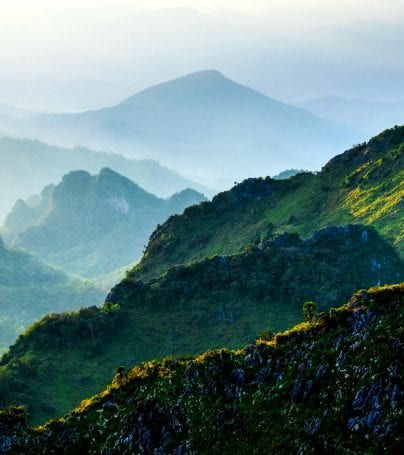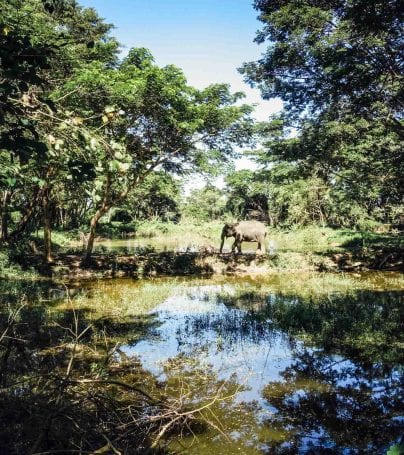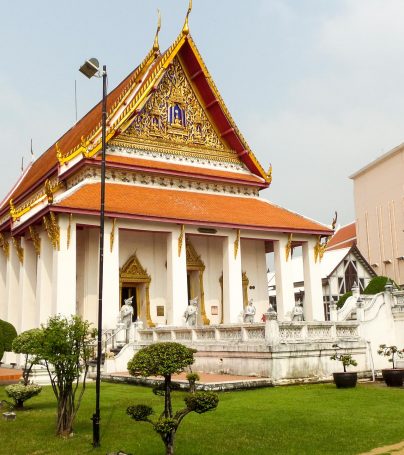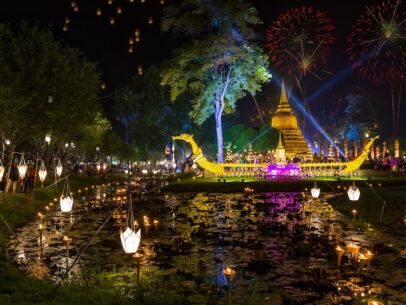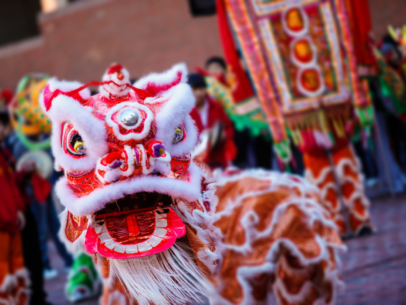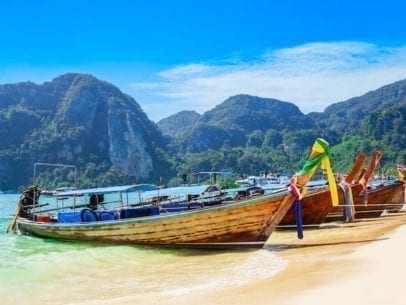Chiang Mai Adventure Tours
Chiang Mai, Lanna sometimes written as “Chiengmai” or “Chiangmai”, is the largest and most culturally significant city in northern Thailand, and is the capital of Chiang Mai Province. It is located 700 km (435 mi) north of Bangkok, among the highest mountains in the country. The city is on the Ping river, a major tributary of the Chao Phraya river. In recent years, Chiang Mai has become an increasingly modern city and attracts approximately 1 million visitors each year. Chiang Mai gained prominence in the political sphere in May 2006, when the Chiang Mai Initiative was concluded here between the ASEAN nations and the “+3” countries (China, Japan, and South Korea). Chiang Mai’s historic importance derived from its strategic location on the Ping river and major trade routes. The city has long been a major center for handcrafted goods, umbrellas, jewelry (particularly silver) and woodcarving. While officially the city (thesaban nakhon) of Chiang Mai only covers most parts of the Mueang Chiang Mai district with a population of 150,000, the urban area of the city now extends into several neighboring districts. This Chiang Mai Metropolitan Area has a population of nearly one million people, more than half the total of Chiang Mai Province.
The city is subdivided into four wards (khwaeng): Nakhon Ping, Srivijaya, Mengrai, and Kawila. The first three are on the west bank of the Ping River, and Kawila is located on the east bank. Nakhon Ping district comprises the north side of the city. Srivijaya, Mengrai, and Kawila consist of the west, south, and east respectively. The city center—within the city walls—is mostly with Srivijaya ward.
History
King Mengrai founded the city of Chiang Mai (meaning “new city”) in 1296, and it succeeded Chiang Rai as capital of the Lanna kingdom. The ruler was known as the Chao. The city was surrounded by a moat and a defensive wall, since nearby Burma was a constant threat. With the decline of the Lannathai kingdom, the city lost importance and was often occupied either by the Burmese or Thais from Ayutthaya. Because of the Burmese wars that culminated in the fall of Ayutthaya in April 1767, Chiang Mai was abandoned between 1776 and 1791. Lampang then served as the capital of what remained of Lannathai. Chiang Mai formally became part of Siam in 1774 by an agreement with Chao Kavila, after the Thai King Taksin helped drive out the Burmese. Chiang Mai then slowly grew in cultural, trading, and economic importance to its current status as the unofficial capital of northern Thailand, second in importance only to Bangkok.
The inhabitants speak Kham Muang (also known as Northern Thai or Lanna) among themselves, though Central Thai is used in education and is understood by everyone. English is used in hotels and travel-related businesses and many educated people speak English. The Kham Muang alphabet is now studied only by scholars, and Northern Thai is commonly written with the standard Thai alphabet.
Chiang Mai has over 300 Buddhist temples (called “wat” in Thai). These include:
Wat Phrathat Doi Suthep, the city’s most famous temple, stands on Doi Suthep, a hill to the northwest of the city. This temple dates from 1383. By tradition, its site was chosen by placing a relic of the Lord Buddha on an elephant’s back and letting it roam until it trumpeted, then circled and died. The temple’s location provides superb views on a clear day.
Wat Chiang Man, the oldest temple in Chiang Mai, dates from the 13th century. King Mengrai lived here during the construction of the city. This temple houses two important and venerated Buddha figures, the marble Phra Sila and the crystal Phra Satang Man.
Wat Phra Singh is located within the city walls, dates from 1345 and offers an example of classic northern Thai style architecture. It houses the Phra Singh Buddha, a highly venerated figure brought here many years ago from Chiang Rai. Visitors can also take part in meditation classes here.
Wat Chedi Luang was founded in 1401 and is dominated by a large Lanna style chedi which took many years to finish. An earthquake damaged the chedi in the 16th century and only two-thirds of it remains.
Wat Ched Yot is located on the outskirts of the city. Built in 1455, the temple hosted the Eighth World Buddhist Council in 1977.
Wiang Kum Kam is at the site of an old city on the southern outskirts of Chiang Mai. King Mengrai lived there for ten years before the founding of Chiang Mai. The site includes many ruined temples.
Wat Umong is a forest and cave wat in the foothills in the west of the city, near Chiang Mai University. Wat U-Mong is known for its fasting Buddha, representing the Buddha at the end of his long and fruitless fasting period before he gained enlightenment. It illustrates a canonical text in which Buddha admonished his monks not to fall into self-torture, since it is a “fruitless” as self-indulgence. Hundreds of Buddhist proverbs in both English and Thai posted on trees throughout the grounds. They were collected by a German monk who lived there in the 1980s. Ironically, only a few of the English language sayings are by the Buddha; the rest are by a Vedanta Hindu saint who inspired the earliest Theosophists.
Wat RamPoeng (Tapotaram), near Wat U-Mong, is known for its meditation center (Northern Insight Meditation Center). The temple teaches the traditional vipassana technique and students stay from 10 days to more than a month as they try to meditate at least 10 hours a day. Wat RamPoeng houses the largest collection of Tipitaka, the complete Theravada canon, in several Northern dialects.
Wat Suan Dok is a 14th century temple located just west of the old city-wall. It was built by the king for a revered monk visiting from Sukhothai for the rains retreat. The temple’s large ubosot (ordination hall) is unusual not only for its size, but also because it is open on the sides instead of enclosed. There are many chedis which contain the ashes of the old rulers of Chiang Mai. The temple is also the site of Mahachulalongkorn Rajavidyalaya Buddhist University, where monks pursue their studies.
Chiang Mai also has about 20 Christian churches, 13 mosques, two gurdwaras (Sikh Temples), and a Hindu temple. Of the 13 mosques, 7 belong to Chinese or Chin Haw Muslims. The gurdwaras are Siri Guru Singh Sabha and Namdhari Sikh Temple; the Hindu temple is Devi Mandir.
Chiang Mai hosts many Thai festivals, including:
Loi Kratong (known locally as Yi Peng): Held on the full moon of the 12th month in the traditional Thai lunar calendar. In the western calendar, this usually falls in November. Every year thousands of people assemble floating banana-leaf containers (krathong) decorated with flowers and candles onto the waterways of the city to worship the Goddess of Water. Lanna-style sky lanterns (khom fai) are launched into the air. These are believed to help rid the locals of troubles and are also taken to decorate houses and streets.
Songkran: Held in mid-April to celebrate the traditional Thai new year. Chiang Mai has become one of the most popular locations to visit for this festival. A variety of religious and fun-related activities (notably the good-natured city-wide water-fight) take place each year, along with parades and a Miss Songkran beauty competition.
Flower Festival: A three-day festival held during the first weekend in February each year, this event occurs when Chiang Mai’s temperate and tropical flowers are in full bloom. The festivities include floral floats, parades, traditional dancing shows, and a beauty contest.
Tam Boon Khan Dok, the Inthakin (City Pillar) Festival, starts on the day of the waning moon of the six lunar month and lasts 6–8 days. In 2009, this was May 20–27. Centered around Wat Chedi Luang where the city pillar is housed, this is a celebration of brahmic origin. Offerings are made to the city pillar as well as the many other Buddhist and Lanna-era icons. Dancing, musical performances, carnival games, and the ubiquitous Thai vendor food is present. This is a very large celebration in which the Chiang Mai citizenry participate.
Some of the museums in Chiang Mai:
Chiang Mai City Arts and Cultural Center.
Chiang Mai National Museum highlights the history of the region and the Kingdom of Lanna.
Tribal Museum showcases the history of the local mountain tribes.
Chiang Mai has several universities, including Chiang Mai University, Chiangmai Rajabhat University, Rajamangala University of Technology, Payap University, Far Eastern University, and Maejo University—as well as numerous technical and teacher colleges. Chiang Mai University was the first government university established outside of Bangkok. Payap University is the first private institution in Thailand that was granted university status.
Khantoke dinner is an old Lanna Thai tradition in Chiang Mai. It is an elaborate dinner or lunch which is offered by a host to guests at various ceremonies or parties, e.g. at weddings, housewarmings, celebrations, novice ordinations, or funerals. It can also be held for temple celebrations such as celebrations for specific buildings in a Thai temple and at Buddhist festivals such as Khao Pansa, Og Pansa, Loy Krathong, and Thai New Year (Songkran).
Nature
The nearby national parks include Doi Inthanon, the highest mountain in Thailand, Doi Suthep and Opkhan.
Elephant Nature Park: Approximately 60 km (37 mi) north of the city or about one hour drive, the Elephant Nature Park is home to approximately 30 rescued elephants. You can visit the park with options ranging from a day trip to volunteering.
Hill-tribe tourism and trekking: A large number of tour companies offer organized treks among the local hills and forests on foot. Most also involve visits to the various local hill tribes. These include representatives from the Akha, Hmong, Karen, and Lisu tribes.
Also past San Khampaeng, about 45 minutes outside of the cities is the village of Mae Kon Phong. It’s home to multiple tea and coffee plantations and also has an eco-friendly zipline tour, Flight of the Gibbon, which donates 10% of the profit to gibbon reintroduction and rainforest conservation. You can explore over 3km of the rainforest canopy on this zip-line tour in about 3 hours.
Nightlife
The Chiang Mai night-life is not as concentrated or outrageous as Bangkok’s infamous Nana Plaza area or Pattaya. There are many relaxing bars, several discotheques, and one street with many hostess bars or beer bars which cater to tourists, located primarily along the entire length of Loi Kroh Road, including a walk-in arcade that features a Muay Thai boxing ring near the Imperial Mae Ping Hotel. Several go go bars can also be found in and around Chiang Mai. The city maintains its liberal, laid-back attitude with several areas and venues that accommodate the gay and lesbian scene. The Chiang Mai night-life is lively and goes well into the wee small hours. Bars and late-night restaurants are located all over the city, but many can be found on either side of the moat’s eastern flank (in the Thapae Gate area), with some excellent live music venues along the Ping River near Nawarat Bridge, along Immanent road in the western part of the city or in the vicinity of the night bazaar. At the Galare Centre, there is a free display of Thai cultural dancing and music. There is also a cluster of bars, American franchise fast food and coffee outlets together with more eclectic restaurants near the intersection of Chang Klan and Loi Kroh Road. Karaoke lounges (which are undoubtedly a national and indeed Asian obsession) can be found all over the city. Many are found at Chiang Mai Land Road, and some very large establishments along the length of Chang Klan Road, extending south from the famed night bazaar.
Chiang Mai Night Safari was established as evening and night tourist attraction. It is committed to be a world class destination and is constantly upgrading to international tourism standard.
Shopping, Massage and Cookery
Chiang Mai has a large and famous night bazaar for arts, handicrafts, and imported products of all descriptions, and a number of large, well-appointed modern shopping centres. The night bazaar alone sprawls along several city blocks along footpaths, inside buildings and temple grounds, and in open squares. A handicraft and food market opens every Sunday afternoon ’til late on Rachadamnoen Road, the main street in the historical centre, which is closed to motorised traffic; the Sunday event attracts many local residents and tourists.
Visitors seeking bargains can also find a thriving second hand “Thieves” market with lots of interesting stalls under shady trees across the river to the east of the city beginning at the intersection of Kaeo Nawarat and Ratanakosin Roads.
Thai massage: The back streets and main thoroughfares of Chiang Mai have an abundance and variety of massage parlours which offer anything from quick, simple, face and foot massages to month-long courses in the art of Thai massage.
Thai cookery: A number of Thai cooking schools have their home in Chiang Mai.
Central Plaza Chiang Mai Airport: An ultra-modern air-conditioned shopping mall located 10 minutes from the city centre near the international airport of Chiang Mai has the full array of western and Thai fashion, electronics, food franchises, coffee shops, a large Cineplex with optional luxury seating and 3D screens showing the latest release western movies in English plus fine examples from the burgeoning Thai movie industry with an adjacent thriving low cost food hall and restaurants.
A focal point of the Plaza is the unique Lanna style Northern Village shopping section featuring high quality local clothing handicrafts and furnishings over three floors. On the lower floor is a mouth watering array of typical Northern Thai Cuisine.
Information based on http://en.wikipedia.org/wiki/Chiang_Mai
Customize Your Dream Adventure
We are here to help craft tailor-made adventures for individuals, couples, families, and groups of explorers.

